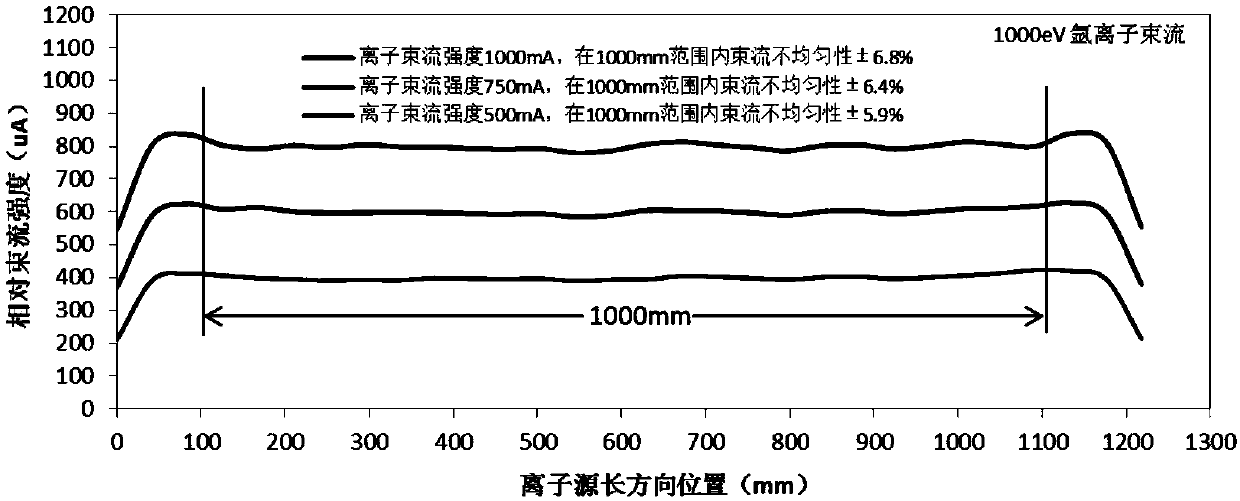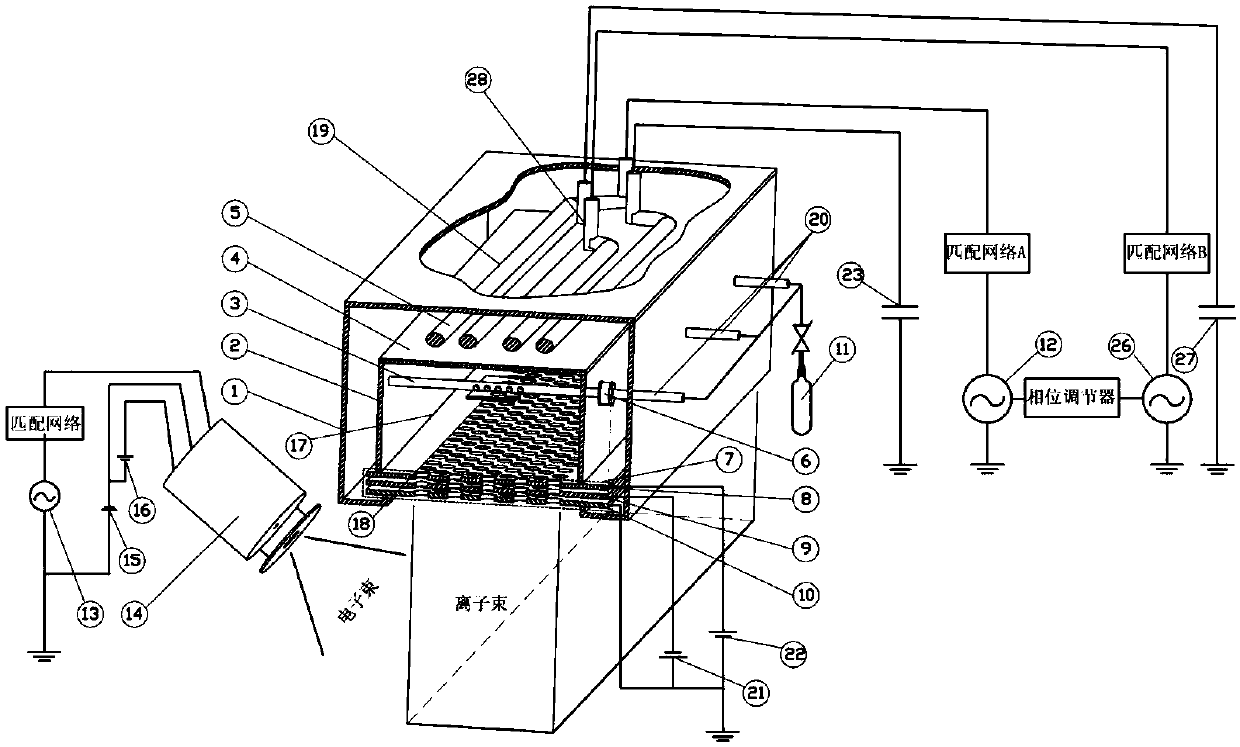Radio-frequency inductive coupling linear ion source
A radio frequency inductive coupling, linear ion source technology, applied in the field of ion beam control, can solve the problems of restricting ion beam spot, uneven plasma density distribution, reducing coupling efficiency and plasma density distribution uniformity, etc.
- Summary
- Abstract
- Description
- Claims
- Application Information
AI Technical Summary
Problems solved by technology
Method used
Image
Examples
Embodiment 1
[0031] like figure 1As shown, a radio-frequency inductively coupled linear ion source includes: an ion source shielding case 1, a radio-frequency coupling antenna 19, a dielectric coupling window 4 for transmitting radio-frequency power and isolating the discharge chamber and the antenna chamber, and a housing for accommodating the discharge plasma The side wall of the plasma discharge chamber 2, the multi-grid ion beam extraction system 7 for extracting ion beams from the plasma discharge chamber, the radio frequency neutralizer for providing initial electrons into the discharge chamber and neutralizing electrons to the ion beam and the substrate Ander 14. Further, it also includes the ion beam screen grid power supply 21, the acceleration grid power supply 22, the radio frequency power generator 12 that provides radio frequency power to the ion source screen grid 8, the acceleration grid 9 and the ground grid 10, and the bias voltage and matching network, a gas supply syste...
Embodiment 2
[0038] like image 3 As shown, on the basis of Embodiment 1, a "comb" Faraday electrostatic shield 24 is provided above the dielectric coupling window 4 of the plasma discharge chamber 17 to reduce the capacitive coupling between the antenna and the discharge plasma and improve the discharge efficiency , to reduce plasma etching and contamination of the coupling window. In order to further improve the density and uniformity of the radio frequency discharge plasma, a magnetic steel 25 is installed between the side wall 2 of the plasma discharge chamber and the shielding shell 1 of the ion source to generate a confinement plasma cusp field.
Embodiment 3
[0040] like figure 1 As shown, on the basis of Embodiment 1, the radio frequency coupling antenna is an antenna group composed of radio frequency antenna 19 and radio frequency antenna 28, and radio frequency energy passes through radio frequency power supply 12, radio frequency power supply A26 and matching network A, matching network B, DC blocking capacitor A23 and the DC blocking capacitor B27 feed energy into the RF coupling antenna 19 and the RF coupling antenna A28 respectively. The RF voltage and power of the RF power sources 12 and 26 can be adjusted independently, and their phase can be controlled by a phase regulator. The uniformity of the discharge plasma can be further improved by controlling the phase and power of the RF power sources 12 and 26 .
PUM
 Login to View More
Login to View More Abstract
Description
Claims
Application Information
 Login to View More
Login to View More - R&D
- Intellectual Property
- Life Sciences
- Materials
- Tech Scout
- Unparalleled Data Quality
- Higher Quality Content
- 60% Fewer Hallucinations
Browse by: Latest US Patents, China's latest patents, Technical Efficacy Thesaurus, Application Domain, Technology Topic, Popular Technical Reports.
© 2025 PatSnap. All rights reserved.Legal|Privacy policy|Modern Slavery Act Transparency Statement|Sitemap|About US| Contact US: help@patsnap.com



